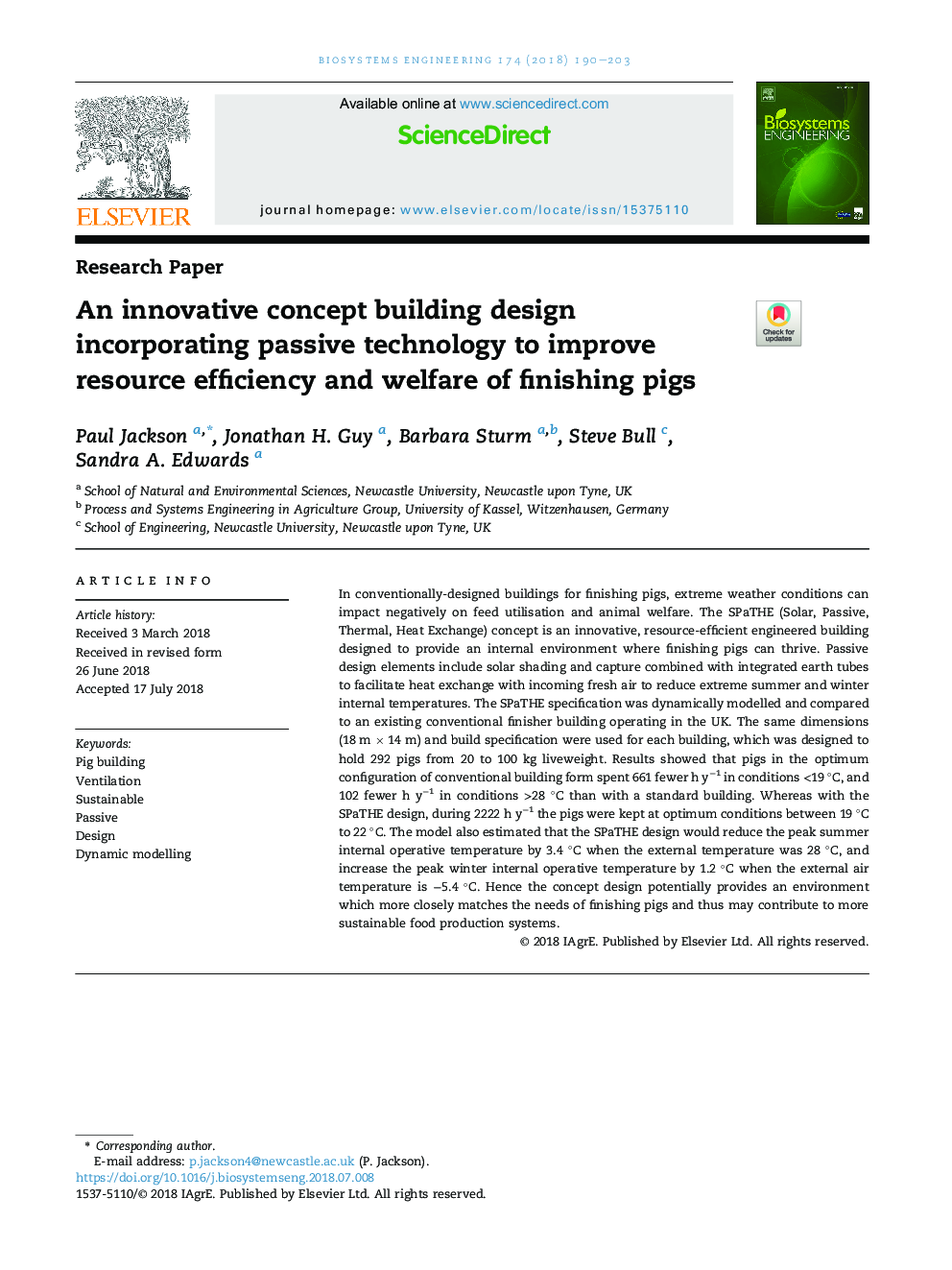| Article ID | Journal | Published Year | Pages | File Type |
|---|---|---|---|---|
| 9953573 | Biosystems Engineering | 2018 | 14 Pages |
Abstract
In conventionally-designed buildings for finishing pigs, extreme weather conditions can impact negatively on feed utilisation and animal welfare. The SPaTHE (Solar, Passive, Thermal, Heat Exchange) concept is an innovative, resource-efficient engineered building designed to provide an internal environment where finishing pigs can thrive. Passive design elements include solar shading and capture combined with integrated earth tubes to facilitate heat exchange with incoming fresh air to reduce extreme summer and winter internal temperatures. The SPaTHE specification was dynamically modelled and compared to an existing conventional finisher building operating in the UK. The same dimensions (18 m Ã 14 m) and build specification were used for each building, which was designed to hold 292 pigs from 20 to 100 kg liveweight. Results showed that pigs in the optimum configuration of conventional building form spent 661 fewer h yâ1 in conditions <19 °C, and 102 fewer h yâ1 in conditions >28 °C than with a standard building. Whereas with the SPaTHE design, during 2222 h yâ1 the pigs were kept at optimum conditions between 19 °C to 22 °C. The model also estimated that the SPaTHE design would reduce the peak summer internal operative temperature by 3.4 °C when the external temperature was 28 °C, and increase the peak winter internal operative temperature by 1.2 °C when the external air temperature is â5.4 °C. Hence the concept design potentially provides an environment which more closely matches the needs of finishing pigs and thus may contribute to more sustainable food production systems.
Related Topics
Physical Sciences and Engineering
Engineering
Control and Systems Engineering
Authors
Paul Jackson, Jonathan H. Guy, Barbara Sturm, Steve Bull, Sandra A. Edwards,
